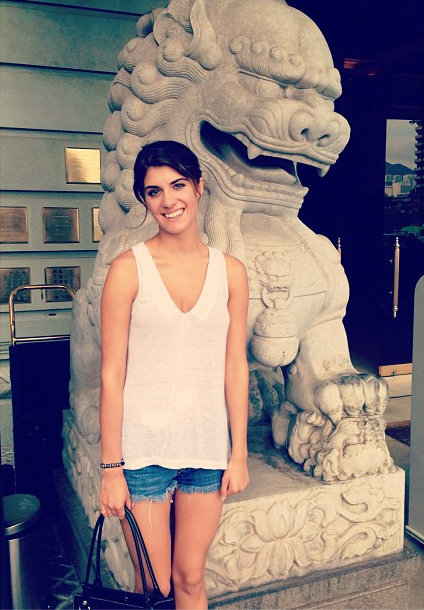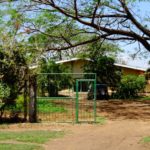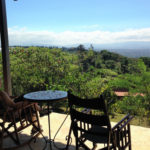Navigating Hong Kong Hospitals During a Ruptured Ectopic Pregnancy

I had barely been in Hong Kong for two hours when I lost consciousness and collapsed. It was my first time in Asia and I was there to visit my then-boyfriend and his family, who luckily lived right next to Hong Kong Adventist Hospital. With my boyfriend’s help I took a cab to the hospital where I again collapsed and was placed on a stretcher and taken into a private room. There, I was diagnosed with a ruptured fallopian tube due to an ectopic pregnancy and needed to go into surgery immediately. But, there was another problem: the private hospital didn’t accept my Aetna health insurance.
After paying the thousand-dollar bill I had already accrued, I was placed in an ambulance to be transported to the closest public hospital. At the public hospital, I sat in the waiting area for at least an hour before my vitals were checked. Once in a room, I waited another hour before a doctor came in to tell me that they didn’t have a gynecology department there and I would need to travel to a hospital on the mainland. Thankfully, they transported me free of charge in an ambulance.
While efficient, there were eight different nurses taking my blood pressure, removing my jewelry, inserting IVs and so forth to the point that I began to have a panic attack.
Finally, I arrived at the third hospital and was prepared for surgery right away. While efficient, there were eight different nurses taking my blood pressure, removing my jewelry, inserting IVs and so forth to the point that I began to have a panic attack. When I started protesting, an English-speaking doctor came over to me and then asked two of the nurses to step back from the gurney. By the time I was taken into the operating room, I’d lost almost two liters of blood due to internal bleeding.
Of course, hospital visits in the United States aren’t usually smooth sailing either. But, from my kidney surgery in elementary school, I remembered a fluid being put into my IV in my hospital room, falling asleep and waking up hours later in the exact same location. This time I was wheeled into the operating room and two doctors moved my body onto the cold metal table. I had removed my contact lenses earlier, so I could barely make out the bodies moving around me, preparing equipment for the procedure.
Then, a man walked up to where my head lay and started to put a mask with a strange smelling gas over my nose and mouth. Since I was unfamiliar with this method of anesthesia, my automatic response was to push away the doctor’s hands. He pushed back, forcing the mask over my face and, in a moment of panic, I began to scream. This got the attention of an English-speaking doctor who came over and explained to me that the gas was necessary in order to put me asleep. I relaxed.
All the men left, but my boyfriend hadn’t arrived yet.
I woke up four hours later as the doctors wheeled me out of the operating room and through the waiting area, where I found my boyfriend. Since it was 5 am at that point, I told him to go home and get some rest. He promised to come back in the afternoon. In the meantime, I was placed in a room with five other women to sleep. A nurse woke me up a few hours later, handing me a breakfast tray. I smiled – I was ravenous! I took a large spoonful of what I thought was oatmeal and shoved it into my mouth – but it wasn’t oatmeal. It looked like oatmeal and had the texture of oatmeal, but it tasted like fish. It didn’t taste bad, just very different from the sweet breakfast cereals I was used to consuming. (Later, I would find out it was congee.)
The other women in the room gobbled up their breakfast and chatted amongst themselves. In the afternoon husbands and boyfriends came to visit. They brought flowers, snacks and magazines. They sat next to the beds and held the women’s hands. An hour later, the nurse came in and announced something in Cantonese. All the men left, but my boyfriend hadn’t arrived yet. Since I hadn’t expected to be separated from him, I did not have a working phone or any way to contact the outside world.
Between hiccups and sobs, I tried to convey that my family was on the other side of the globe and he was the only person I knew in Hong Kong.
A short while later, the nurse came back in carrying one of my purses full of books and various entertainments I’d brought on the flight. I asked to see the boy who brought the bag and she did her best to explain that the visiting hour was over, but he could come in if he was a family member or spouse. “He’s my boyfriend,” I explained and she shook her head that boyfriends didn’t count. Hearing these words, I broke down in tears. Between hiccups and sobs, I tried to convey that my family was on the other side of the globe and he was the only person I knew in Hong Kong. In the end, he was not admitted to see me. But, he was on time for visiting hour the next day.
I spent three days in the hospital, staying long enough to prove I could walk without passing out. During that time, I tried lots of new foods and mastered the use of chopsticks, even with a shaky hand. The five women in the room chatted back and forth the entire time. (I will always wonder what these strangers discussed for 72 hours.) And when I was discharged, they all smiled and waved goodbye and I waved back because, at the end of the day, women don’t need words to empathize with each other.

Navigating Hong Kong Hospitals During a Ruptured Ectopic Pregnancy top photo by Unsplash.









Hi! Great article. Quick question, how much did the public hospital end up costing you roughly?
How scary for you. Hong Kong is easy to travel by using public transportation but in an emergency situation not having a car can be a bit hectic. My husband cut his toe last week. Lots of blood and it was rush hour. We must of walked for a block or two until we could get one to take us to the hospital. Thank you to our building supervisor who walked with us to translate in Cantonese that we needed to go to the hospital. We went to Queens Hospital. Supposedly it is the best local hospital for lung and heart transplant. I had a similar experience as you did but years ago while living in the U.S. I would not want to do it all over again in China. Thanks for posting because now we live in HK and have Aetna Insurance as well and I was certain it was acceptable everywhere in HK. Was your policy a global plan? Take Care. Safe Travels.
Yes, mine was a global policy plan. My advice would be to call ahead and check if they take your insurance. Safe travels to you as well!
Wow. Pleasantly written. It’s very interesting to read about the different cultures and how their hospitals are quite different from what we are used to.